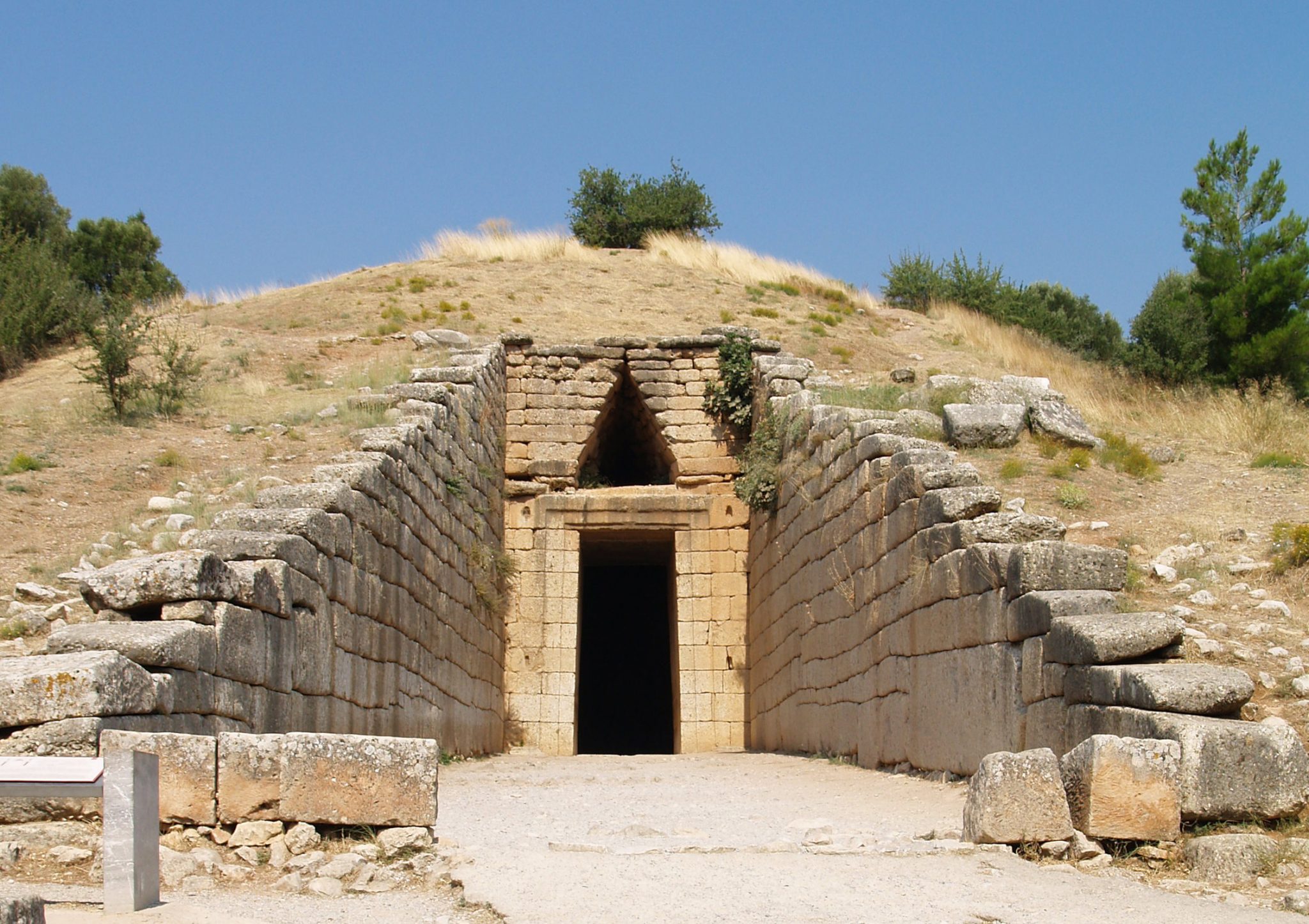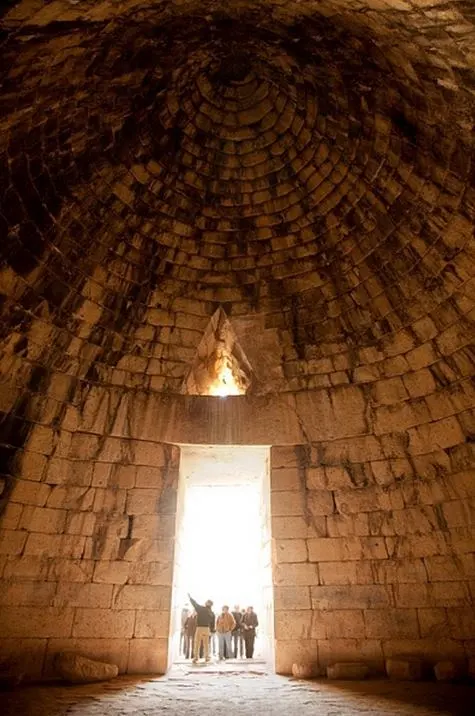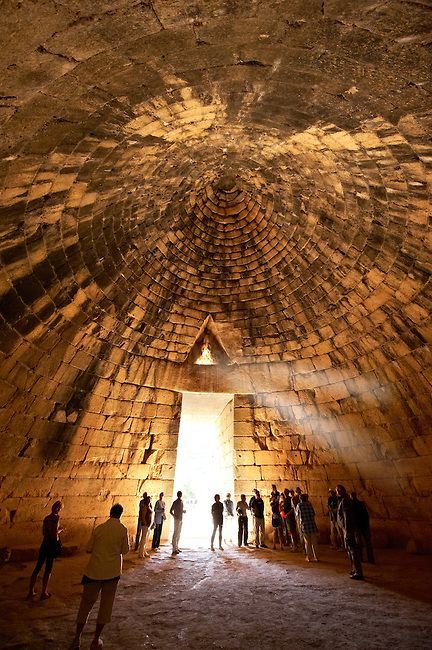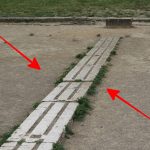Atreus Treasury – Agamemnon Tomb, Mycenae, 1300 – 1250 BC

The Treasury of Atreus stands as a testament to the grandeur and architectural prowess of ancient Mycenae, dating back to the late Bronze Age, specifically between 1300 and 1250 BC. Located in Greece, this monumental tomb is believed to have been built for Agamemnon, the legendary king of Mycenae and leader of the Greek forces during the Trojan War.

The structure itself is a marvel of engineering, designed with a massive corbelled dome that reaches a height of over 13 meters (approximately 43 feet) and spans nearly 14 meters (about 46 feet) in diameter. This architectural feat not only showcases the Mycenaean civilization’s advanced understanding of construction techniques but also reflects their cultural emphasis on honoring the deceased with monumental tombs.
The entrance to the Treasury of Atreus is approached through a long, narrow passageway known as a dromos, which leads to a monumental doorway flanked by large stone columns. The lintel above the doorway is a massive single stone estimated to weigh around 120 tons, making it one of the largest stones used in any ancient structure. This impressive entrance adds to the imposing presence of the tomb and underscores the importance of the individuals interred within.

Inside, the tomb consists of a circular chamber with a high, domed ceiling constructed using the corbelling technique, where successive layers of stones gradually overlap inward until they meet at the apex. This method not only provided structural stability but also created a sense of awe-inspiring space that was meant to evoke reverence and respect for the departed.
The Treasury of Atreus is part of a broader complex of royal tombs at Mycenae, including the nearby Tomb of Clytemnestra and the Lion Gate, which served as the main entrance to the citadel. These tombs are indicative of the Mycenaean civilization’s hierarchical social structure and their elaborate funerary practices, which emphasized the importance of commemorating and honoring their rulers and nobility.

The significance of the Treasury of Atreus extends beyond its architectural and engineering achievements. It serves as a tangible link to the myths and legends of ancient Greece, particularly the stories of Agamemnon and the Trojan War, immortalized in the epic poems of Homer. The tomb’s association with Agamemnon, whether historically accurate or legendary, underscores its cultural and historical importance in understanding the Mycenaean world and its place in the broader context of ancient Mediterranean civilizations.
Today, the Treasury of Atreus continues to be a site of archaeological and historical interest, attracting visitors from around the world who come to marvel at its engineering ingenuity and to reflect on the cultural and historical legacy of ancient Mycenae and Greece. As a UNESCO World Heritage Site, it stands as a reminder of the enduring impact of the Mycenaean civilization and its contributions to the development of Western civilization.











